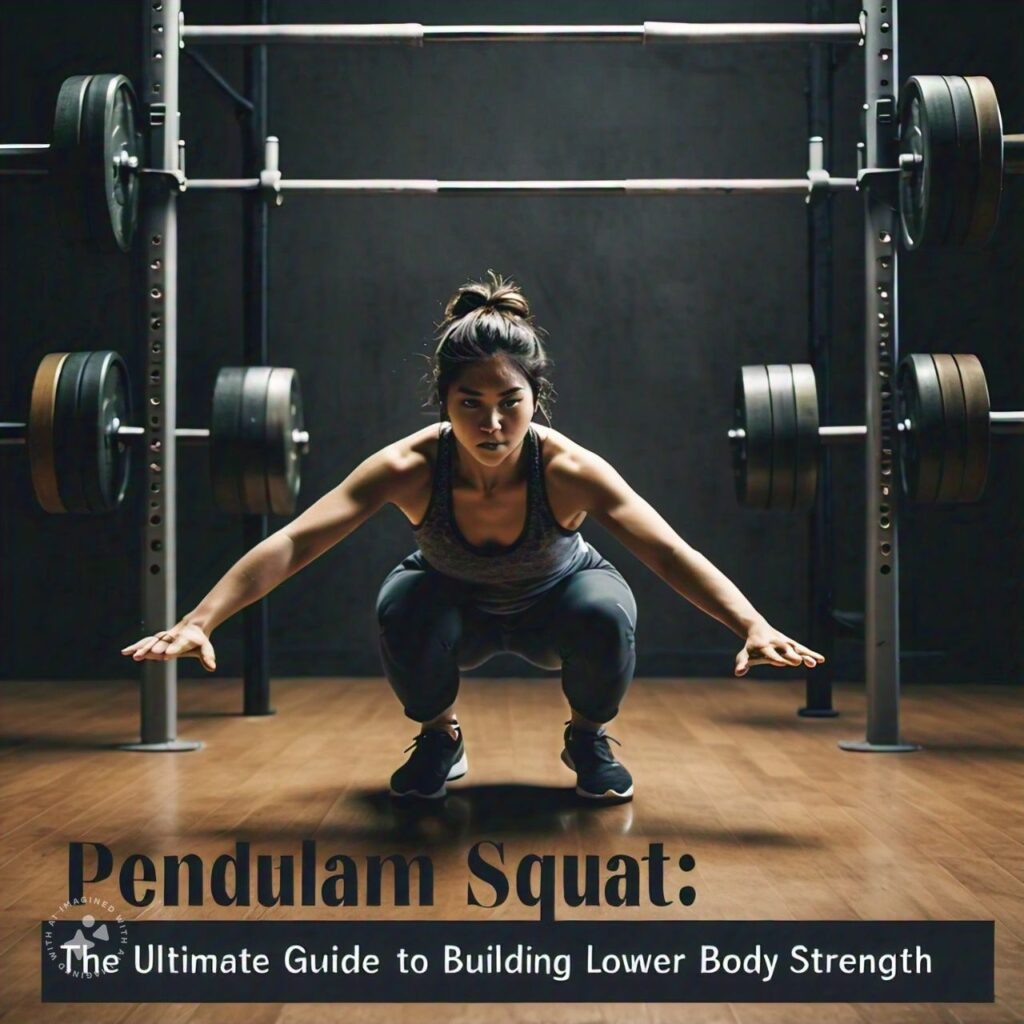If you’re committed to building strong legs and a powerful lower body, you’ve likely tried various squat exercises. Squats are the cornerstone of any leg workout, offering unbeatable benefits for strength, muscle growth, and overall fitness. But have you heard about the pendulum squat? This underrated but highly effective exercise might be just what you need to take your leg day to the next level.
What is a Pendulum Squat?
The pendulum squat is a machine-based exercise designed specifically to target your lower body, focusing on the quads, hamstrings, and glutes. Unlike traditional squats, where balance and form can be tricky, the pendulum squat machine lets you concentrate solely on the movement. This helps reduce injury risk and ensures you’re hitting the right muscles every time.
The machine features a swinging arm with a foot platform attached. As you squat, the platform moves in an arc, creating a unique resistance pattern that challenges your muscles differently from traditional squats.
Why You Should Add Pendulum Squats to Your Routine
You might wonder why the pendulum squat is worth your time when exercises like back squats and leg presses are already in your routine. Here’s why the pendulum squat stands out:
1.Maximized Quad Engagement
The pendulum squat emphasizes the quadriceps, making it ideal for anyone looking to build bigger, stronger thighs. The machine’s design ensures that your quads do most of the work, giving you a focused, effective workout.
2.Enhanced Safety
Since you’re using a machine, the pendulum squat offers greater safety compared to free-weight squats. The machine supports your body, minimizing the risk of injuries from poor form or balance issues. This makes it perfect for beginners or those recovering from an injury.
3.Constant Muscle Tension

One of the standout features of the pendulum squat is the consistent tension it provides throughout the movement. Unlike traditional squats, where muscle tension decreases at the top of the lift, the pendulum squat keeps your muscles working hard from start to finish.
4.Ideal for Muscle Growth
If building muscle (hypertrophy) is your goal, the pendulum squat is a game-changer. The consistent tension and targeted muscle engagement can help you break through plateaus and add serious mass to your legs.
5.Joint-Friendly Exercise
For those with joint concerns, the pendulum squat is a great alternative to traditional squats. The machine’s design reduces strain on your knees and lower back, making it a safer option for individuals with joint issues.
How to Do a Pendulum Squat Correctly
To get the most out of your pendulum squat, it’s crucial to perform the exercise with proper form. Here’s a step-by-step guide:
1.Set Up the Machine
Adjust the pendulum squat machine so that the foot platform is at a comfortable height. Position yourself on the machine, placing your feet shoulder-width apart on the platform. Make sure your back is pressed against the backrest, and your shoulders are under the shoulder pads.
2.Engage Your Core
Before starting the movement, engage your core to stabilize your body and protect your lower back during the squat.
3.Lower into the Squat
Slowly lower yourself into the squat by bending your knees. Keep your chest up and your back flat as you descend. Aim to lower yourself until your thighs are parallel to the ground or lower if your mobility allows.
4.Push Back Up
Once you reach the bottom of the squat, push through your heels to return to the starting position. Focus on using your quads to lift the weight, and avoid letting your knees cave inward.
5.Repeat for Reps
Complete the desired number of repetitions, focusing on controlled, deliberate movements. Quality over quantity is essential for this exercise.
Tips for Success with Pendulum Squats
To make the most of your pendulum squat workouts, consider these tips:
Warm Up Properly: Always start with a good warm-up to get your lower body ready. Spend 5-10 minutes on dynamic stretches or light cardio before starting your pendulum squats.
Start Light: If you’re new to the pendulum squat, begin with a lighter weight to master the movement. Gradually increase the weight as you get more comfortable with the exercise.
Prioritize Form: Focus on perfecting your form before adding more weight. Good form is critical to preventing injuries and ensuring that you’re targeting the right muscles.
Incorporate into Leg Day: Add the pendulum squat to your leg day routine alongside other exercises like lunges and leg presses. This will help you challenge your muscles from different angles and improve overall leg development.
Common Mistakes to Avoid
Avoid these common mistakes to ensure you’re getting the most out of your pendulum squat:
Using Too Much Weight: It’s tempting to load up the machine with heavy weights, but this can compromise your form and increase the risk of injury. Start with a manageable weight and focus on technique.
Skipping Full Range of Motion: To fully engage your muscles, make sure you’re going through the full range of motion. Don’t cut your reps short; aim to lower your thighs parallel to the ground.
Ignoring Core Engagement: A weak core can lead to instability and increase the risk of lower back injuries. Keep your core tight throughout the movement to maintain stability.
Who Should Use Pendulum Squats?
The pendulum squat is suitable for a wide range of people, from beginners to advanced lifters. It’s particularly beneficial for:
Quad Development: If you want well-defined, powerful quads, the pendulum squat is a must-have in your routine.
Joint Protection: If you have knee or lower back issues, the pendulum squat offers a safer alternative to free-weight squats, reducing stress on these areas.
Breaking Plateaus: Advanced lifters who are stuck in a plateau can use the pendulum squat to add variety and challenge their muscles in new ways.
Frequently Asked Questions About Pendulum Squats
1.What muscles do pendulum squats target?
Pendulum squats primarily target the quadriceps but also engage the hamstrings, glutes, and core muscles. The machine’s design ensures that your quads remain the primary focus throughout the exercise.
2.Are pendulum squats better than traditional squats?
Pendulum squats aren’t necessarily better than traditional squats, but they offer unique benefits. They provide constant tension on the quads and are safer for those with joint issues. However, traditional squats engage more muscle groups and improve overall stability.
3.Can beginners do pendulum squats?
Yes, pendulum squats are beginner-friendly. The machine provides support, making it easier to focus on proper form. It’s an excellent exercise for beginners to build strength and confidence before moving on to more complex squat variations.
4.How often should I do pendulum squats?
You can incorporate pendulum squats into your leg day routine 1-2 times per week. Ensure you allow enough rest and recovery time between sessions.
5.Should pendulum squats replace traditional squats?
While pendulum squats are highly effective, they shouldn’t completely replace traditional squats. Traditional squats offer more comprehensive muscle engagement and benefits like improved core stability. However, pendulum squats are a great addition to your routine, especially if you’re targeting your quads.
Conclusion
The pendulum squat is a powerful tool for building lower body strength and size while minimizing the risk of injury. Whether you’re an experienced lifter looking to push past a plateau or a beginner seeking a safe and effective way to strengthen your legs, the pendulum squat deserves a spot in your workout routine. Start light, focus on your form, and gradually increase the intensity to see the best results. Happy squatting!




